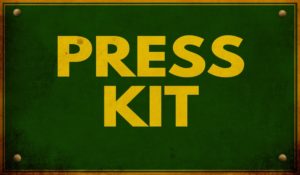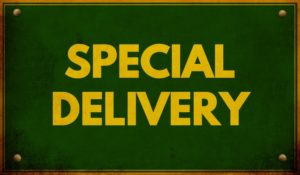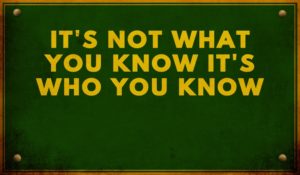Is Press Release Writing Still Viable in the Information Age?
For Immediate Release are three very powerful words. A well-crafted press release can still generate the kind of editorial endorsement no amount of paid advertising can buy.
 But there’s an art to creating one. A proper press release contains legitimate news and announcements parcelled out by a company or agency to a select group of media contacts. These contacts have been carefully cultivated and primed through industry meetups and such to receive the information favorably and (hopefully) feature it in their publications and broadcast programs.
But there’s an art to creating one. A proper press release contains legitimate news and announcements parcelled out by a company or agency to a select group of media contacts. These contacts have been carefully cultivated and primed through industry meetups and such to receive the information favorably and (hopefully) feature it in their publications and broadcast programs.
Editors often depend on press release writers to provide them with future stories for slow news days. They can use the press release to fill their pages or air time without having to do much research themselves. The story is basically handed to them.
 Once upon a time there was even something called the press kit–a slick packet of collateral materials kicking off a company campaign or product launch. There could be a small sample included. Larger companies held a press conference to hand them out. it wasn’t unheard of for a determined PR person to slip past a magazine or major newspaper’s receptionist to hand deliver a press kit to a writer’s desk.
Once upon a time there was even something called the press kit–a slick packet of collateral materials kicking off a company campaign or product launch. There could be a small sample included. Larger companies held a press conference to hand them out. it wasn’t unheard of for a determined PR person to slip past a magazine or major newspaper’s receptionist to hand deliver a press kit to a writer’s desk.
Today, with so many social media outlets, many companies wonder if it’s still worth the time and expense to produce press releases. We think so. But only if you play by the rules. It’s not advertising. It’s not SEO. Deliver quality news and information people can use and you will see the public relations game is still in full swing.
More than ever, the press release is one of the most essential tools for crafting a message and keeping a brand current in the minds of your target audience. But the days of the two-page paper press release are over. To reach a social audience, it needs content marketing staples like embedded video, audio clips, infographics and photography.
Send Who-Knew? News
 Save the fluffing for pillows. You know what constitutes news, so dig deep for topics the media hasn’t seen before, at least not from you. Don’t send blatantly self-promotional, commercial or old news to the press. Earn a reputation for unearthing real news and the media will actually partner with you.
Save the fluffing for pillows. You know what constitutes news, so dig deep for topics the media hasn’t seen before, at least not from you. Don’t send blatantly self-promotional, commercial or old news to the press. Earn a reputation for unearthing real news and the media will actually partner with you.
Write Like A Reporter
 Don’t risk having an editor scroll past your post. Pound the most important facts into the headline and first few paragraphs. Make it short, succinct and dry as the desert floor. Just journalistic help, no hype.
Don’t risk having an editor scroll past your post. Pound the most important facts into the headline and first few paragraphs. Make it short, succinct and dry as the desert floor. Just journalistic help, no hype.
Use Special Delivery Services
 When the release is ready, a simple link can be sent via email to a reporter or tweeted to an audience. (So much for sneaking past the receptionist.) A few free press release services provide distribution, or spend the money for established leaders like Marketwire, PRNewswire and BusinessWire.
When the release is ready, a simple link can be sent via email to a reporter or tweeted to an audience. (So much for sneaking past the receptionist.) A few free press release services provide distribution, or spend the money for established leaders like Marketwire, PRNewswire and BusinessWire.
Have Friends in High Places
 Public relations is about building and maintaining relationships. Editors move around: update your lists so you never send the food editor unappetizing fashion news. Posting press releases to a news blog let’s you then tweet it to media contacts, but external factors can affect their response. You might pay thousands to post an event invitation on PR Newswire. If it’s a big news week, it can easily get overlooked. Having established contacts at your industry’s key publications is your backup. Send the press release with a personal note then follow up with a good old-fashioned phone call.
Public relations is about building and maintaining relationships. Editors move around: update your lists so you never send the food editor unappetizing fashion news. Posting press releases to a news blog let’s you then tweet it to media contacts, but external factors can affect their response. You might pay thousands to post an event invitation on PR Newswire. If it’s a big news week, it can easily get overlooked. Having established contacts at your industry’s key publications is your backup. Send the press release with a personal note then follow up with a good old-fashioned phone call.
Optimize for SEO
 Packing press releases with keywords and links to your website won’t increase traffic, and it could get Google mad. They don’t give points for links on press releases; only earned third-party endorsements, aka editorial links, from sources with no vested interest. Nevertheless, observe editorial integrity and make links beneficial. You are allowed one link to your homepage. Your other links should be coded as “no-follow.” This tells Google, “Don’t count this, we don’t expect points” to avoid being penalized.
Packing press releases with keywords and links to your website won’t increase traffic, and it could get Google mad. They don’t give points for links on press releases; only earned third-party endorsements, aka editorial links, from sources with no vested interest. Nevertheless, observe editorial integrity and make links beneficial. You are allowed one link to your homepage. Your other links should be coded as “no-follow.” This tells Google, “Don’t count this, we don’t expect points” to avoid being penalized.
Goals, Metrics and What It All Means
 What do you want to achieve with your press release? What’s quantifiable and measurable? Will announcing last quarter’s sales gain interest anyone but the financial publications? Is that okay? Did introducing a new executive to the industry gain any traction on new media? Were the click-throughs responsive to your site content?
What do you want to achieve with your press release? What’s quantifiable and measurable? Will announcing last quarter’s sales gain interest anyone but the financial publications? Is that okay? Did introducing a new executive to the industry gain any traction on new media? Were the click-throughs responsive to your site content?
There are so many metrics you can track, but which are the one’s to concentrate on? Impressions, for example, tell you the number of readers exposed to your release, but “reads” captures how many actually, well, read it. Engagement and social share metrics let you see who is sharing and commenting on your news. Click-throughs spotlight visits to your homepage. Knowing which actions your press release yields gives you a quantifiable feel for its effectiveness.
 So how valuable are your press releases? What can you learn from your data to create more effective messages going forward? Has your call to action to register for an event pulled more than the prompt to subscribe to a newsletter? If so, use the more effective wording that produced the stronger results.
So how valuable are your press releases? What can you learn from your data to create more effective messages going forward? Has your call to action to register for an event pulled more than the prompt to subscribe to a newsletter? If so, use the more effective wording that produced the stronger results.
If you have some news ready for immediate release, let us help you do it right. Our content writers know the ins and outs of composing a perfect press release.




